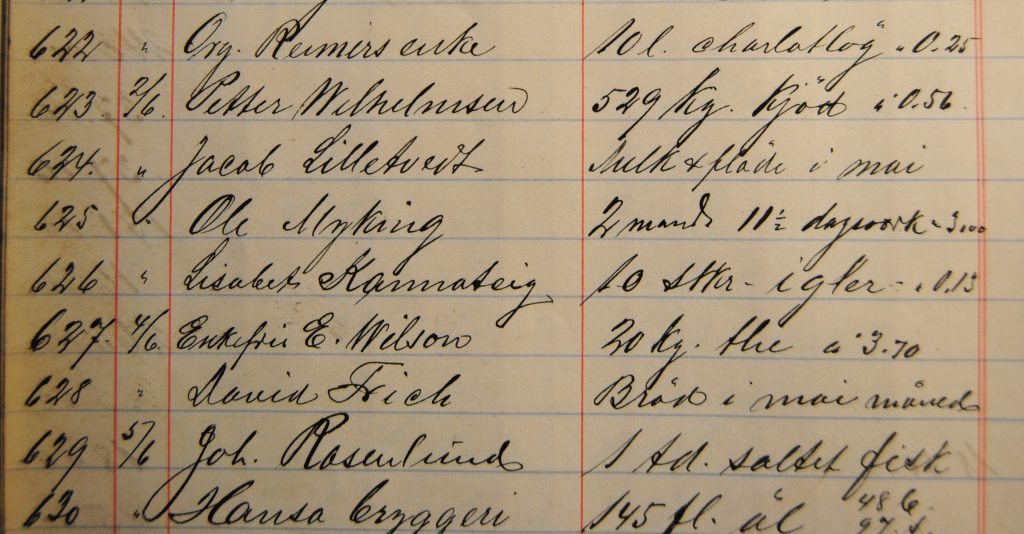The kitchen and dining at Pleiestiftelsen
The kitchen was in the basement and was described as bright and spacious. Food, or ‘victuals’ as they were called, and firewood were stored in a room right next to the kitchen. The kitchen had a steam boiler that was used for cooking food in large copper pots. A hoist was installed making it relatively simple to get the food from the kitchen to the two floors above.

All food was purchased by and prepared at the hospital in accordance with a meal plan that defined the menu and quantity of food. The superintendent was in charge of purchases and was assisted by the bookkeeper. Unlike some other institutions, there were no ‘cattle or pigs’, but some vegetables were grown in the kitchen garden. The accounts from the superintendent set out that the amount of food harvested in the garden varied greatly from year to year. In 1863, ‘the cold and almost incessant rainfall throughout the summer and autumn’ meant the yield was ‘next to nothing’. The yield was only 4 ½ barrels of shallots, 1 ½ barrels of turnips, 1 ⅝ barrels of carrots and 4 ½ barrels of swedes.
Food was by far the largest expense at Pleiestiftelsen Hospital, often accounting for almost half of the budget. The requisition records show that food was purchased from many different places, including private individuals: potatoes and onions, grain and flour, bread, milk and cream, barrels of salted fish and herring, minced meat, coffee and tea, rice, syrup and cinnamon before Christmas and ‘pastries for Saint John’s Eve’.

The Regional State Archives of Bergen.
There was a lot of food preparation and cooking when almost 300 residents and many of the staff would eat four meals a day at fixed times. As a rule, breakfast was at 7:30am, dinner at 12pm, coffee at 4pm, and supper at 8pm. The times were slightly different in summer. In 1860, only four ‘kitchen maids’ are mentioned among the staff. Five years later, the hospital had a dining manager, a head cook, two assistant cooks and a kitchen maid.
Except for those who were bedridden, meals had to be consumed in the dining rooms. It was not permitted to take food from the dining room or hide it.


The Regional State Archives of Bergen.



